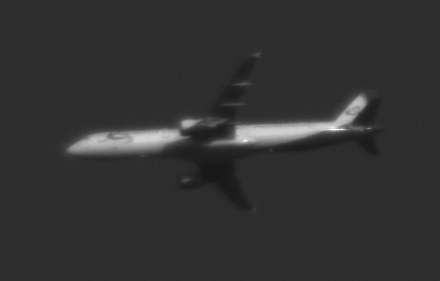Stabilized videos of aircraft
It turns out ImPPG's image alignment (via phase correlation) function comes in handy when trying to capture a video of passenger aircraft at cruising altitudes. My rig for the experiment was a SW Newtonian 114/500 (hence the coma visible in asymmetric highlights) on AZ4 + PGR Chameleon 3 mono (ICX445) camera:
Raw video looked e.g. like this (scaled down):
I cut out fragments with the plane constantly visible, converted to image sequences and run them through ImPPG.
Airbus A321-211

Boeing 737 (click)
-
 1
1










6 Comments
Recommended Comments
Create an account or sign in to comment
You need to be a member in order to leave a comment
Create an account
Sign up for a new account in our community. It's easy!
Register a new accountSign in
Already have an account? Sign in here.
Sign In Now